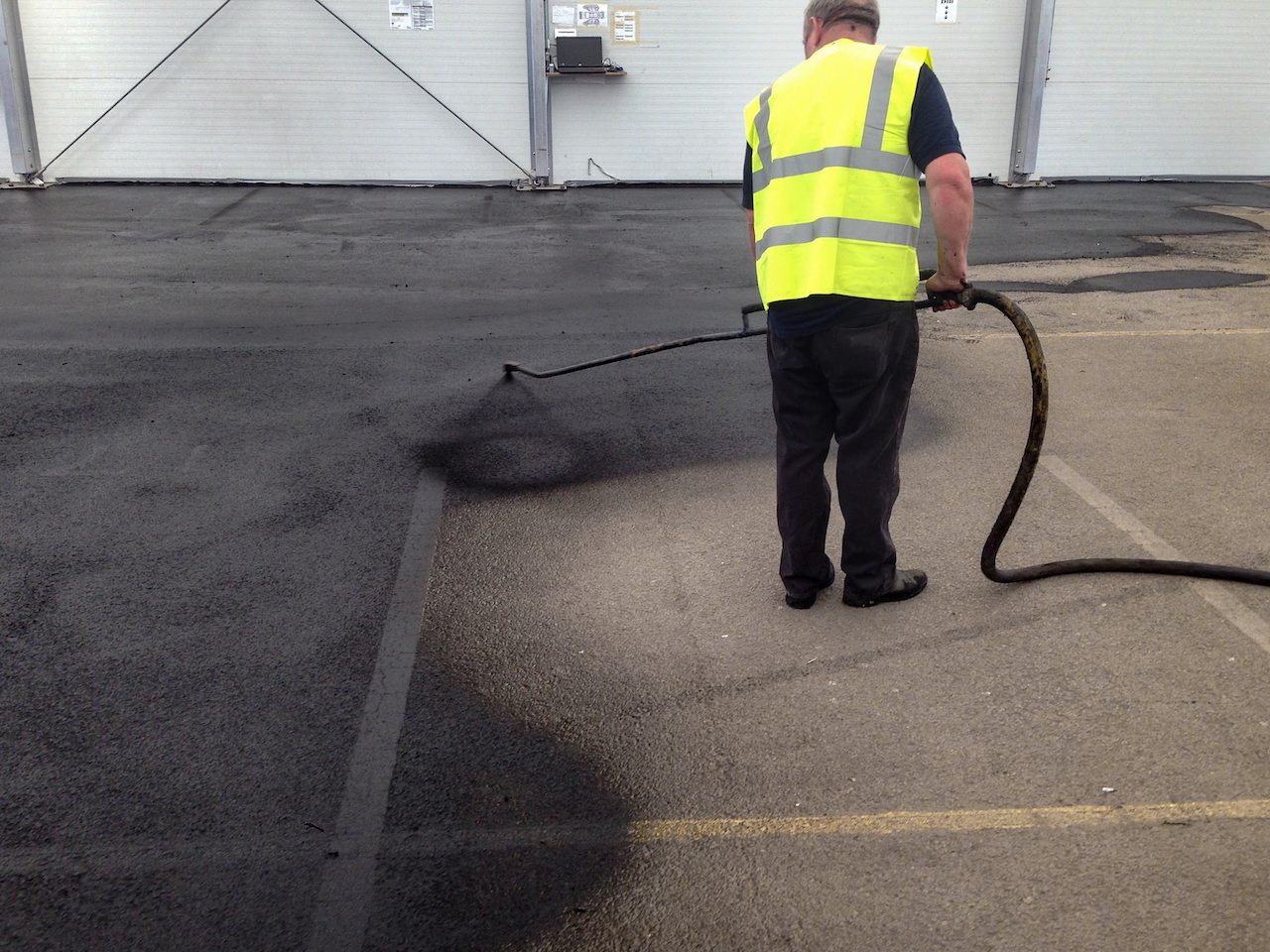
After New Pavement Construction
The Curing Process for Asphalt Pavement
Traffic will be using your new pavement long before it is completely cured. The contractor probably told you that you could allow vehicle traffic within one or two days following the installation. This does not mean that the asphalt is fully cured, however, as the entire process can take several months. For the first year of your pavement’s existence, it will be more susceptible to damage. Asphalt professionals discourage “burning rubber,” panic stopping, moving the steering wheel on a stationary vehicle, hard turns and not placing a board underneath kickstands and trailer jacks. In addition, bins, carts and similar objects with steel wheels should not be allowed on your new pavement, but those with rubber wheels should not cause any damage.
Asphalt Is a Petroleum Distillate
In case you are wondering why this matters, petroleum distillates will try to recombine with other petroleum distillates, including oil, gas and other automotive fluids. When this happens, asphalt pavement can disintegrate. Since there is virtually no way to avoid leaked automotive fluids, you will need to be vigilant about cleaning up these spills before they have a chance to damage your pavement.
Sealcoating Must Wait
Sealcoating is a highly effective and economical way to increase the longevity of asphalt pavement and help it retain its appearance. Sealants block the UV rays that rob asphalt pavement of its moisture as well as its color, and they also slow the progress of automotive fluids. However, new asphalt pavement needs to cure for 30 to 90 days before sealants can be applied. To ensure that you do not overlook this very important procedure, make yourself a note to schedule your sealcoating at the time recommended by the contractor installing your new pavement.
Damage Is Repairable
It is not always possible to prevent damage to your new asphalt pavement. However, most damage can be repaired quickly and economically. The sooner that you have damages repaired, the less noticeable the repairs will be. Furthermore, some types of damage, including cracks and potholes, can turn into major problems if neglected. Any type of break that could allow water to seep under the pavement should be addressed quickly; water can erode the base that gives asphalt pavement its strength and elasticity. Once the base incurs sufficient damage, sections of the pavement can subside or develop extensive cracking patterns. The pavement will have to be removed and the base repaired.
Choose MH Greeson to Maintain Your New Pavement
In Atlanta, GA, MH Greeson Paving is known to provide customers with jobs that last longer, look better and cost less than the competition. We are an asphalt maintenance and paving company that provides an extensive range of services, including crack and asphalt repair, sealcoating, asphalt paving and parking lot striping. We also install car stops, bollards and traffic signs. You can request a free quote by submitting our online form or calling (770) 335-2983.
We are the Premier Asphalt Company in Atlanta, GA!




